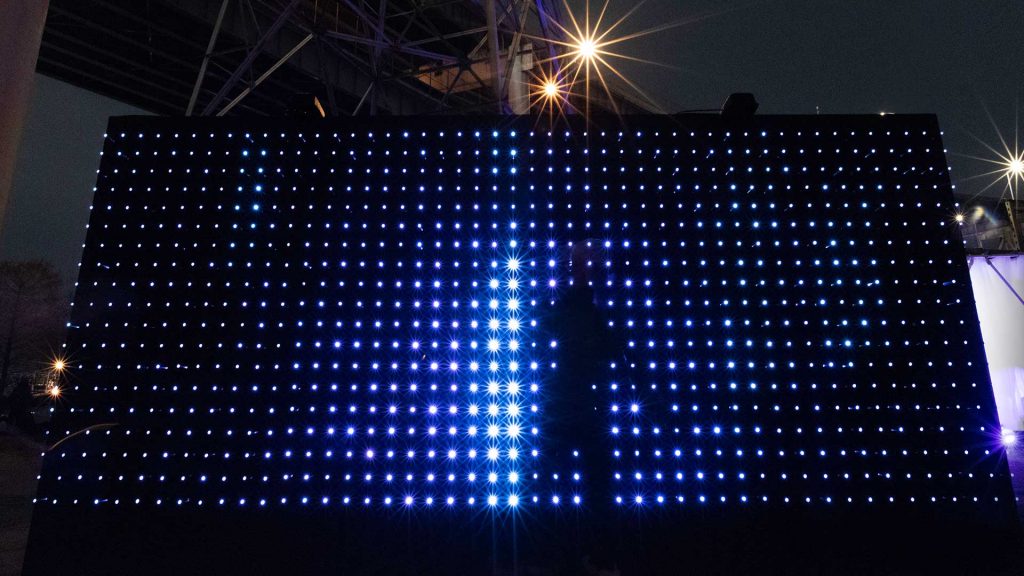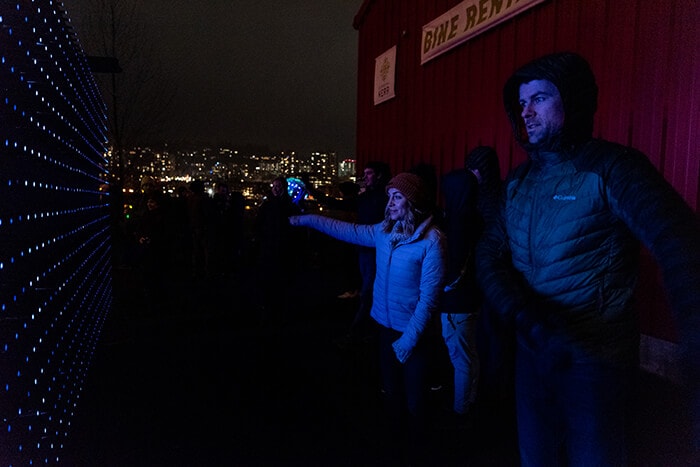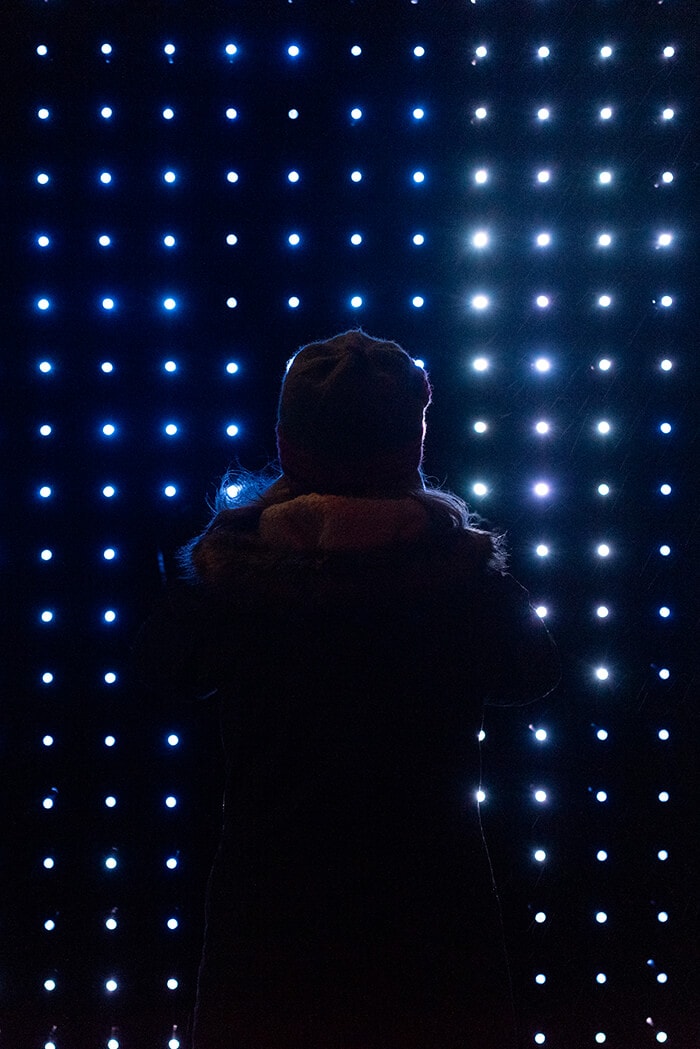
Art and Interactivity in the Touch-free age
In a time when we are all increasingly spending much of our free time at home for the near future, and socially distancing when we do return to public life, it’s hard to see what our future entertainment options look like from here. The drive-in movie theater is a great example of contact-free entertainment that is currently undergoing a renaissance, but technology also shows us that there are more options for art that can help us connect with each other, even at a distance. This post will explore some of the ways that artists have used depth cameras to create new and interesting pieces.
Touch free art
In previous blogs we have discussed art installations that include Intel® RealSense™ Depth cameras for interactive installations. The recent Portland Winter Lights Festival featured an installation created by Gensler called “Lucid.” This piece simulated a dream world, the space between the waking world and our subconscious. People viewing the work moved through a field of colored lights that used an Intel RealSense depth camera to react to their motions and movements.
Time-lapse video of the installation, courtesy Gensler
In these additional videos below, you can see how even this simple reflection allows the viewer to connect with the art in a more visceral level. This installation happened in February of this year, prior to the shelter in place guidelines many of us are still experiencing today.
Videos of the installation in action, courtesy Iokian Li, Gensler
In a world where social distancing may be the norm for many of us for at least the next year, it’s likely we will all be looking for new experiences where we can remain physically distant from each other. Imagine interactive pieces like this in parks or other outdoor spaces, but perhaps as a paired experience, where you can ‘touch’ people who are meters or miles away. Being able to connect and share experiences safely is more important and impactful to our emotional and mental wellbeing than ever before. With low-power and low compute requirements, Intel RealSense depth cameras offer a great way to achieve interactivity that is completely touch free. Using either skeletal or gesture tracking.

People interacting with the Lucid Installation, photo courtesy Timothy Niou

People interacting with the Lucid Installation, photo courtesy Timothy Niou
An expanded digital world
Another alternative to public, outdoor art pieces, are digital pieces that we can view using devices safely at home. While this fascinating and creepy experiment from Voxon Photonics uses a holographic style display, it’s possible that we might start to see new pieces of entertainment where actors are filmed with depth cameras, interacting and acting with each other at a distance and then composited for 2D films or virtual reality headsets and augmented reality enabled mobile devices.
This is a little test we did using an @IntelRealSense depth camera before doing some holographic (well technically volumetric) video calls… There’s no audio on this one but you get the picture. Just imagine what the future could be like 🙂 #3D #communications #tech pic.twitter.com/nk3VozrpzZ
— Voxon Photonics (@voxonphotonics) July 26, 2019
Or how about this interactive painting, using the depth camera as an input to drive a whole body digital art experience from artist Florian Zumbrunn?
Friday is a good day to paint with your body #madewithunity #intelrealsense #vfx pic.twitter.com/buFUAXyVlt
— Florian Zumbrunn (@florianzumbrunn) March 22, 2019
As we start to tire of being on constant video conference calls, will we turn to digital avatars driven by a depth camera to represent ourselves? Keijiro Takahashi frequently experiments with an Intel RealSense depth camera feeding the depth data directly to the Unity game engine to drive interesting visual effects. With a depth camera, you don’t have to be simply on video, but can drive particles and avatars in a way that is true to your own motion and choose how you want to represent yourself on any given day.
RealSense + Unity VFX Graph
I converted this one into RealSense.https://t.co/M8O67naCqW pic.twitter.com/espR80FrIY— Keijiro Takahashi (@_kzr) April 28, 2019
If you need to escape your physical space to explore somewhere new, a 3d scanning application along with an Intel RealSense depth camera can also provide new environments for virtual exploration, something I am sure we will all be seeing more of in the coming months as we start to experience boredom with our current environments.
Conclusion
These are just a few examples of art installations and experiences utilizing Intel RealSense Depth cameras for interaction and creation, though there are many more ways this technology can be used to create something new and unique. If you have something to share that uses depth, please feel free to share with us on twitter or Instagram @intelrealsense.
*Header Image of the Lucid Installation courtesy Sam Peters
Subscribe here to get blog and news updates.
You may also be interested in
“Intel RealSense acts as the eyes of the system, feeding real-world data to the AI brain that powers the MR
In a three-dimensional world, we still spend much of our time creating and consuming two-dimensional content. Most of the screens
